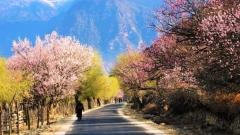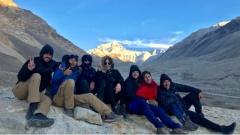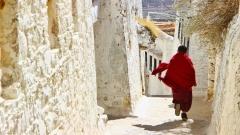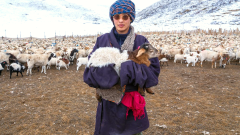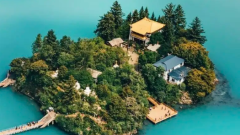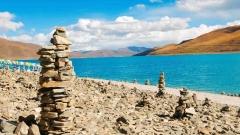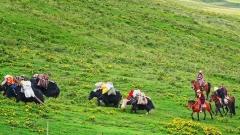Philosophical debate is one of the most distinctive traditions in Tibetan Buddhism. Unlike quiet meditation, these debates are lively, physical, and filled with energy. For centuries, monks across Tibet have refined their understanding of Buddhist teachings through rigorous exchanges of logic, reasoning, and scripture. To outsiders, the clapping, stamping, and dramatic gestures may seem theatrical, but for monks, it is a profound way to sharpen the mind and deepen spiritual wisdom.
The Purpose of Debate in Tibetan Buddhism
Debate is not about defeating an opponent but about clarifying meaning and removing doubts. Tibetan Buddhism emphasizes both meditation (samadhi) and wisdom (prajna). Debate is a crucial method for cultivating wisdom.
Through debate, monks:
-
Test understanding of Buddhist texts – ensuring that theory is not just memorized but applied.
-
Develop sharp reasoning – distinguishing between valid and invalid interpretations.
-
Eliminate misunderstandings – correcting errors through logical questioning.
-
Strengthen concentration – since debates require focus and quick thinking.
The process helps transform intellectual knowledge into true insight, essential for spiritual growth.

Samye Monastery Monks
The Setting of Monastic Debates
Debates usually take place in monastery courtyards, often shaded by trees and surrounded by whitewashed walls. The environment is open and dynamic, allowing monks to move freely. Typically, one monk takes the role of the questioner, while another serves as the defender. The questioner challenges with rapid-fire queries, and the defender must respond logically, citing scriptures and reasoning.
The Unique Debate Style: Gestures and Symbols
Tibetan monastic debates are famous for their physicality:
-
Handclap – When the questioner asks a question, he claps his hands loudly, symbolizing the union of wisdom and compassion.
-
Right hand striking left palm – Signifies the crushing of ignorance through wisdom.
-
Foot stamping – Represents closing the door to lower rebirths.
-
Forward lunge – A dramatic gesture to emphasize the challenge and demand an answer.
These symbolic movements energize the debate and make it a highly engaging learning method.
Example: Debating at Sera Monastery
One of the most famous places to witness this tradition is Sera Monastery in Lhasa. Founded in the 15th century, Sera has long been a center of Buddhist learning. Every afternoon (except Sundays), the monastery’s debate courtyard comes alive.
Visitors can watch dozens of monks engaging in spirited debate. Some sit on the ground as defenders, while others stand and challenge them with vigorous claps and shouts. The sound of clapping echoes through the courtyard, creating an atmosphere both lively and intellectual.
For tourists, this is not a performance but a glimpse into centuries-old training. The monks debate topics such as the nature of emptiness, the meaning of compassion, or the stages of enlightenment. Even without understanding the Tibetan language, one can feel the passion and dedication behind every exchange.
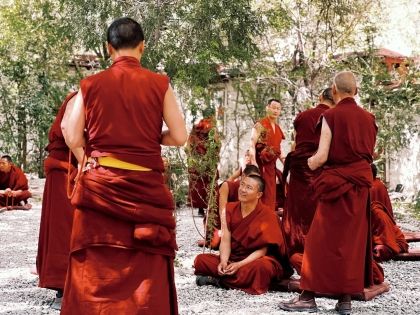
Sera Monks Debate
The Training Path of Monks
Debating is not casual; it follows a structured curriculum:
-
Elementary Stage – Young monks learn basic logic, definitions, and memorization.
-
Intermediate Stage – They engage in structured debates on specific texts, such as Madhyamaka philosophy.
-
Advanced Stage – Senior monks participate in highly complex debates, often lasting hours.
The culmination of this training is the Geshe degree, the highest academic honor in Tibetan Buddhism, comparable to a doctorate in philosophy. Achieving this requires decades of debate and study.
Why Debate Matters in Today’s Tibet
Even in the modern age, debate remains central in Tibetan monastic education. It is not just intellectual exercise—it shapes character, discipline, and spiritual maturity. It teaches monks to listen, respond thoughtfully, and refine their understanding of truth.
For travelers, witnessing a debate is a reminder that Tibetan Buddhism is not static or purely ritualistic but alive with inquiry and dialogue.
Traveling Tip: Where to Experience Monastic Debates
-
Sera Monastery (Lhasa) – The most popular and accessible place for visitors. Debates usually happen around 3 pm in the courtyard.
-
Drepung Monastery (Lhasa) – Another major monastery where debates occur during festivals.
-
Tashi Lhunpo Monastery (Shigatse) – Known for scholastic traditions, debates are part of monastic training.
Always observe respectfully: avoid interrupting, remain quiet, and remember that this is an educational and spiritual practice, not entertainment.
Conclusion
Monastic debates in Tibet are a vivid blend of philosophy, performance, and spirituality. They show how wisdom is cultivated not just in solitude but through dynamic interaction. Watching monks at Sera Monastery clap, stamp, and challenge one another is to witness a living tradition that continues to shape Tibetan Buddhism today.
For travelers, it is one of the most memorable and inspiring cultural experiences Tibet has to offer.



